Trip of a lifetime: Riding through Spain and Portugal with IMTBike
This won’t be your typical travelogue detailing a sequence of routes, destinations, historical notes, and points of interest. There’s simply no way to do justice to those aspects of my two-week Iberian odyssey, even in this double-sized article. You can find such information on IMTBike’s website. Here I’m going to zoom out to provide a bird’s-eye-view, covering only the most general categories of this spectacular experience, which is still quite a daunting task!
Like Drinking from a Firehose
The most salient aspect of this tour was its sheer volume of stimulation. It was a non-stop avalanche of wondrous sensory inputs, far exceeding any human’s capacity to absorb. At most any given moment on the road, I had to decide between paying attention to the exhilarating tasks of piloting a motorcycle on sinewy asphalt or gawking at the breathtaking scenery surrounding me. Mealtimes demanded impossible choices between numerous equally enticing dishes and which fellow travelers I’d sit with to share freshly inspired conversation. Mid-day stops, evening free time, and three so-called “rest” days presented wide arrays of options to explore, with time to sample only the tiniest fraction of what was available. I’d have been overwhelmed if given a moment to reflect on just how much I was constantly missing! Instead, I did the only thing humanly possible: I picked bits and pieces on the fly and resigned myself to the blur of perpetual excess. It was immediately apparent from the outset I’d have to abandon any hope of consuming everything on offer. Imagine being a child given one hour to spend at Disney World; that’s what it felt like for two solid weeks.
For someone in search of a relaxing vacation, this characteristic would be a drawback. We were on the go all the time, even when we weren’t riding. Sure, there were unscheduled hours each day, but any impulse to rest had to compete with a plethora of compelling activities. When you’re far from home in exotic places, it’s very hard to just lounge in your room, no matter how tired you are. That’s the only “downside” of this tour I can identify, and it certainly wouldn’t be a negative for everyone. For those who have trouble unplugging from the routine stressors of work and domestic concerns, the intensity here would likely provide distractions powerful enough to deliver a much-needed break.
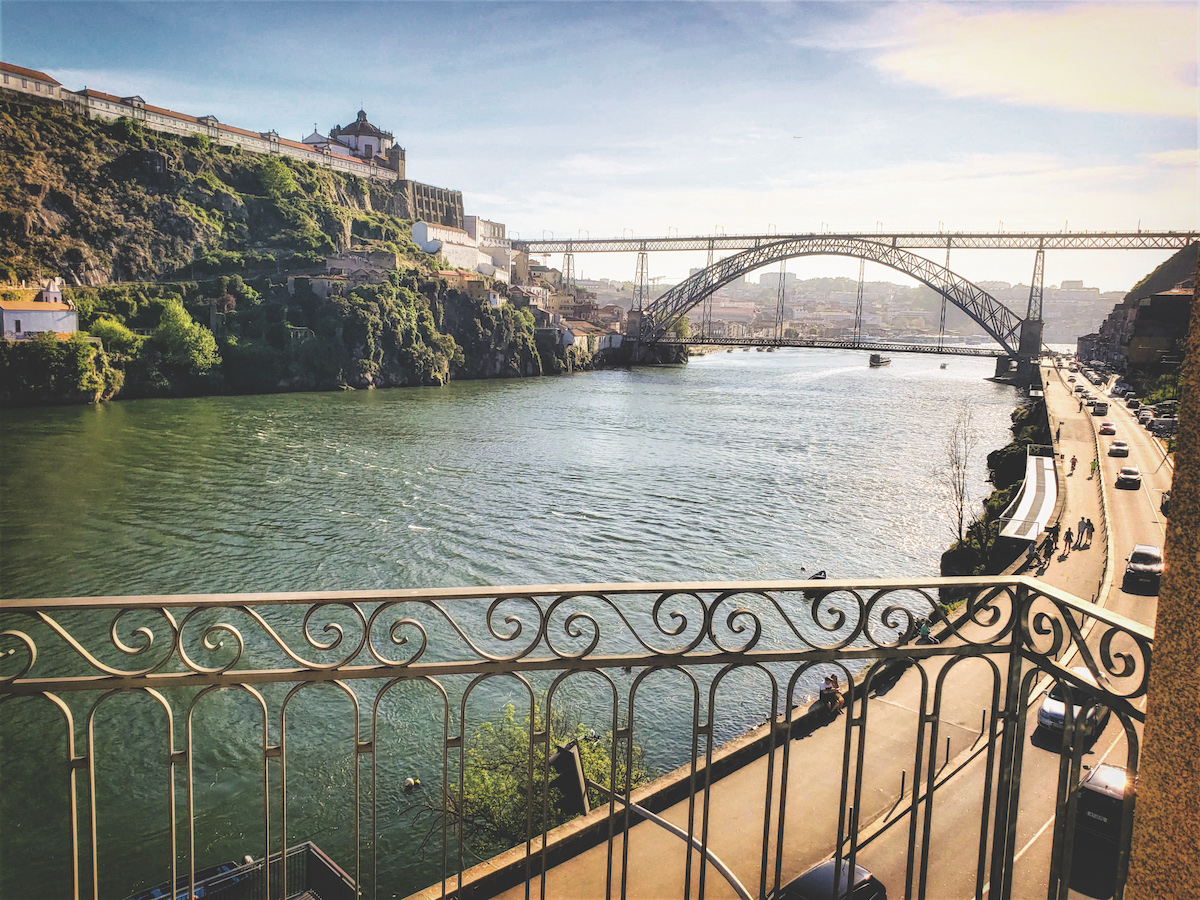 The Basics
The Basics
With that global impression setting the tone, here’s the tour’s fundamental structure. A diverse assortment of 17 American travelers, with 12 motorcycle pilots and five passengers, met in Madrid, Spain for an introductory meeting led by Head Guide Martin and Assistant Guide Ali on the eve of the tour’s launch. Most IMTBike tour groups are comprised of a more heterogenous international mix, but this trip was set up especially for MOA members. We learned a bit about each other, received an orientation to traffic and safety issues for European riding, and were infected with the bubbly enthusiasm of our guides as they described the myriad thrills awaiting us on our winding counter-clockwise trek to Portugal’s coast and eventual arc back to Madrid, totaling 1,774-miles. It was thoroughly outlined in the extensive 60-page tour-specific handbook we received.
Each riding day thereafter began with breakfast at the hotel or parador (more on these later), with bikes loaded and wheels turning between 8:00 and 9:00 a.m., depending on how much ground we had to cover (124-204 miles/day). While never militant, our guides instilled an ethos of timeliness in the group such that everyone was ready to go on, or ahead of, schedule whenever we were to convene and exit. Although given the option of riding apart from the pack (to go faster, slower, or take an alternate route), no one chose to do so and we remained in a fairly cohesive string throughout each leg of the tour, rearranging our order on a somewhat random basis depending on how the bikes had been parked, who was ready to roll first, or who felt like clumping together. Eventually, some stratification developed with faster riders up front, but this was neither consistent nor a matter of competition. Over the course of the tour, everyone rode in front of and behind every other rider, and the group’s speed was carefully managed by Martin at the lead and Ali in the sweep van; those two were in constant communication regarding everyone’s status. Any time the group got too spread out or segmented by traffic, the leading contingent would slow or pull over and wait for everyone else to catch up. This created a communal atmosphere and provided reassurance nobody could get hurt or lost without immediate detection. For the record, there were no injuries or significant route deviations among my tour-mates, though a couple of us with older bladders did pull off to “de-hydrate” a time or two.
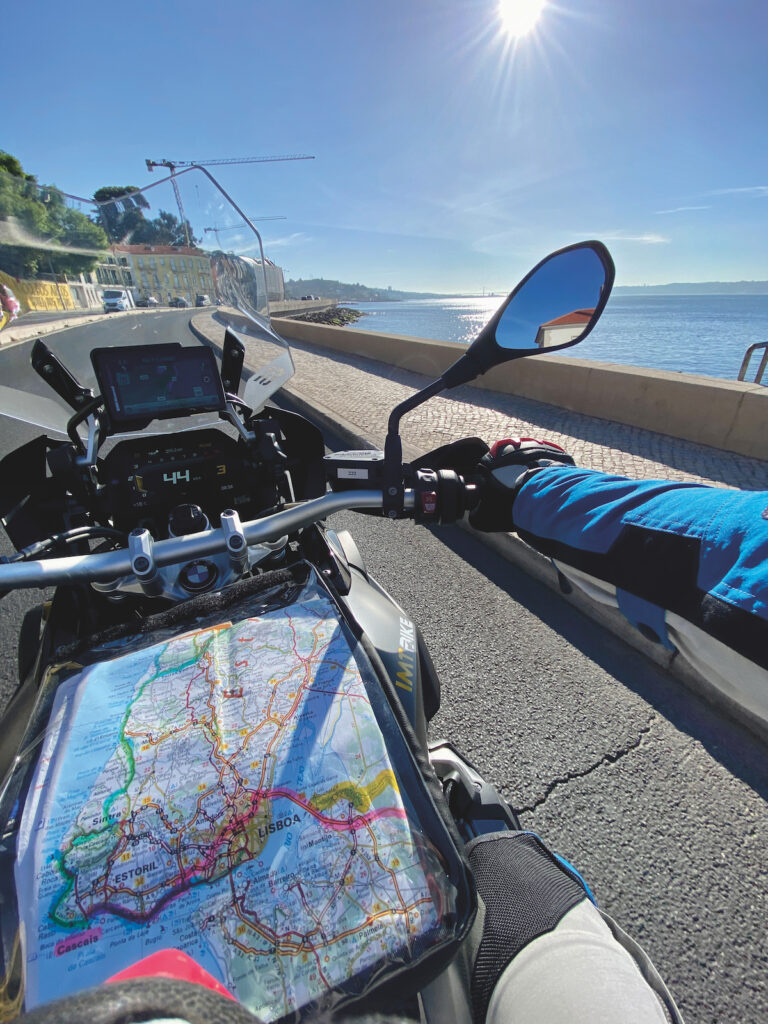
Around 90 minutes after our initial departure, we’d pause for a mid-morning coffee break in a charming café (lasting about half an hour), often with a scenic view or interesting landmark a short stroll away. The second leg to lunch would be similar in duration, with a respite of up to two hours if we stopped somewhere with lots to see, which was usually the case. We might eat as a group at a restaurant or be given free rein to wander around and choose an eatery individually (or just have a snack to maximize sightseeing time). Given a culture wherein meals are approached as leisurely opportunities to socialize, it could be difficult to hustle in and out of restaurants American-style. I learned to relax into the unavoidable choice of either covering a lot of ground on foot or savoring a delicious meal and discussion with my new friends. Even with an allowance of two hours, there was no way to do both.
The second half of the day would involve another break mid-afternoon, again usually at a picturesque spot, and then often a refueling stop. The latter was an extraordinary exhibition of coordinated efficiency, the guides simultaneously gassing up two columns of advancing motorcycles in quick succession. It was like watching a pit crew, and we lost very little time to this necessity. Arriving at our destination each afternoon between 4:30 and 5:30, we were given two to three hours to explore the area before regrouping for a 30-minute meeting at the hotel/parador’s bar. There, Martin would review events of the day and outline plans for the next, including our route, schedule and particularly noteworthy points of interest. I cannot overstate the excitement conveyed during these presentations! Both guides exuded relentless positivity and affability, but Martin, who has been doing this particular tour (in continuously evolving form) for the past quarter-century, seemed to be the opposite of jaded by his extensive familiarity with it. Knowing what was coming made him more enthused, not less, and he clearly relished the opportunity to share with us the treasures ahead. Always eager to engage us about the riding, bikes, castles, cathedrals, and other jaw-dropping sights, or area history and culture (his knowledge was encyclopedic), Martin was an exemplary leader, unquestionably yet deftly shaping our experience each day to keep everyone safe, content and aligned with the mission of having big fun together.
I must also highlight Ali’s hard work and dedication. While performing the critically important duties of driving sweep and carrying tools, a spare bike, and most of our luggage (what we didn’t need with us on the bikes) in the support van, he also maintained communication with staff at all our various stops, making countless arrangements and keeping places abreast of our arrival times so they were always ready for us. He managed to load/unload our luggage with care and speed, locked up our jackets and helmets while we wandered on foot during the day, and took meal orders proactively for many of our evening repasts. When one rider had a minor spill, he toted the bike and took the rider to a nearby hospital for examination, just to be certain he was okay. And when another rider became ill, Ali procured medicine and special meals for him. Every morning our windshields were clean, mechanical adjustments were performed promptly, and everyone benefited from Ali’s effervescent personality. He was constantly working behind the scenes to ensure a seamlessly smooth experience for every tour participant and he succeeded brilliantly.
Great Roads
According to Martin, Spain’s pavement is a point of national pride, which was easy to believe after sampling almost a thousand miles of it in both urban and extremely remote areas. Not only were there zero potholes or patches, but the grip was consistently superlative (Martin attributes this to the asphalt’s special composition). On the vast majority of riding days, we navigated literally thousands (plural!) of curves. Let that sink in. I’ve ridden the legendary Tail of the Dragon hundreds of times and many of the roads on this tour made that curvaceous stretch seem like an airport runway by comparison, and they were many times its length. Every corner genre was well-represented, from long, high-speed sweepers to super-tight hairpin switchbacks, and everything in between. We rode over multiple mountain ranges, across vast plains, along the Portuguese coastline, through small towns, and, occasionally, in major cities (with minimal time spent negotiating dense traffic).
IMTBike rates this tour’s roads low-medium in challenge level, requiring intermediate skill. That’s accurate in an averaged sense, but some sections were significantly more demanding than that description suggests—nothing like the Stelvio pass (Google it), but definitely more technical than anything found on typical routes in the American mid-west or other flatlands. My estimation of my tour-mates’ skill levels would place them all at high-average or well above. None of them found the challenges problematic, but some said they definitely got a good workout in the twistier portions. In any case, the roads alone were enough to make this tour worthwhile.
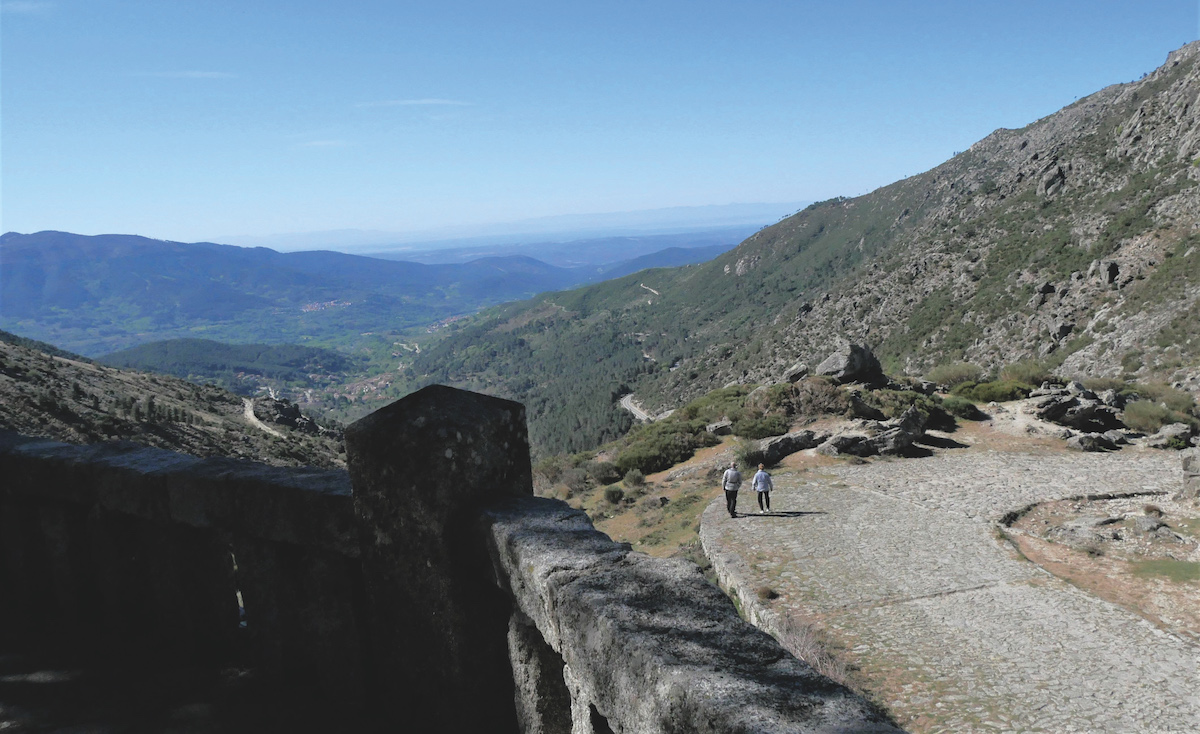
Great Scenery
Much of Central Spain is arid, and this spring brought higher temps and less rainfall than usual, so many of the areas we traveled through were rocky, gray, and brown, especially in the mountains that didn’t benefit from weather moving north from the Mediterranean (these were nevertheless strikingly beautiful in a stark, barren way). Other areas near the coast and along the more southerly sierras and their foothills were lush, and we passed through verdant farmlands with newly sprouting crops and herds of livestock. The spectrum of landscapes on this tour represented much of what’s available on the planet. It was common to spy castles and fortresses on hilltops or craggy mountainsides in the distance, or right in the middle of small villages through which we passed. Riding down narrow, cobblestone streets in older towns provided a glimpse of life from long ago. One of the most impressive sights was a multitude of homes built on shockingly steep mountain slopes. On some streets I could see entrances to driveways, but they dropped at such sharp angles the rest would be completely invisible. Fascinating gothic architecture, viewed from the saddle or on foot, compounded the dilemma of deciding where to focus my attention. A European tour veteran advised me to use a GoPro on this trip (which I did), explaining it’d be impossible to appreciate all the visuals while also concentrating on the fantastic riding; I could look at the places I’d ridden through once I got home! His advice contained some wisdom, but obviously my recordings don’t really capture all the phenomenal sights I (partially) witnessed.
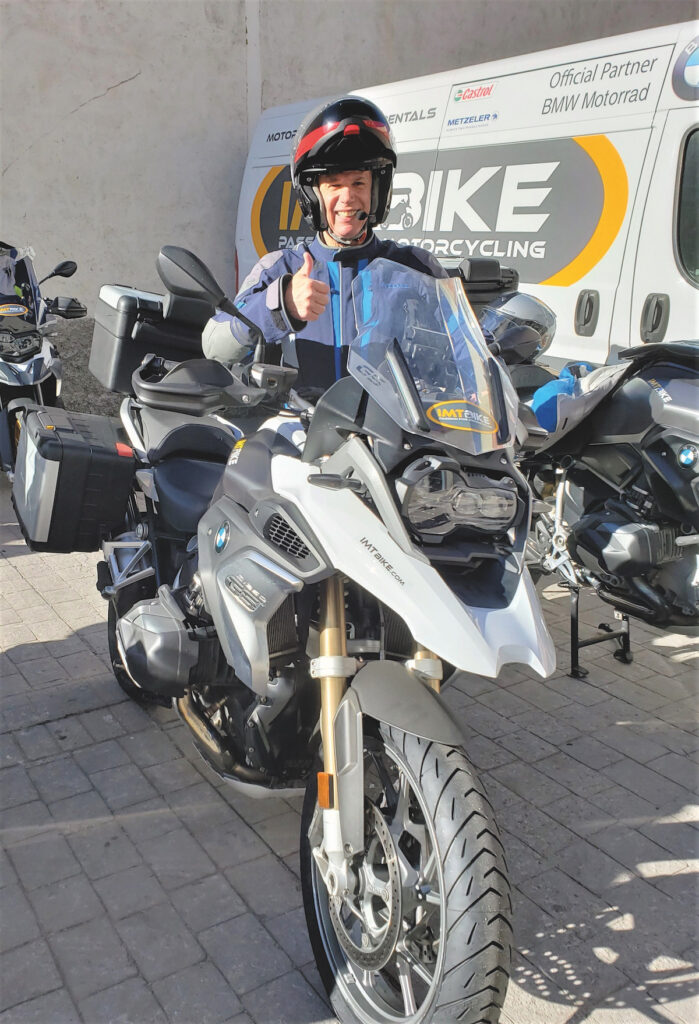 Great Motorcycles
Great Motorcycles
IMTBike has used BMWs exclusively from its start in 1997. While their fleet of over 200 bikes contains virtually every current model, my group mostly chose the F 750 GS or F 850 GS. There was also one R 1250 RT, one F 800 GT, one S 1000 XR, and two R 1250 GSs, one of which (with the lowered suspension option) was ridden by yours truly. All machines were low-mileage and in pristine condition, outfitted with factory side- and top-cases, and none had any mechanical issues during the tour. Any could have a GPS added for a small fee, but there was little need, given how the group moved as a pack. Some riders chose mounts identical to what they rode at home, others wanted something different out of curiosity or because they felt it would be more fitting for this trip. I’ve been considering the possibility of swapping my R 1250 RS for a GS, so it was a perfect opportunity to do an extended test ride on this alternative. (I’m still torn, but much clearer on the pros and cons of each.) IMTBike rents from their fleet on an individual basis, too, from five locations scattered across the Iberian Peninsula.
Note that the support van can accommodate a passenger or two. Anyone desiring a break from riding pillion could spend a stint there, and one spouse rode shotgun the whole time. If this holds appeal, check with IMTBike about availability.
Great Accommodations
Paradors are unique government-operated hotels (with their own bars/restaurants) found mainly in Spain; Pousadas are their privately owned counterparts in Portugal. These are historic structures—castles, monasteries, convents, and palaces—that have been renovated into thoroughly modern facilities with all the amenities you’d find at upscale establishments of newer vintage, but with many of their original architectural features preserved or restored. Riding into a medieval walled city or fortress through a massive stone gate dating back to the 15th century (or earlier) is a mind-blowing experience! Simply spotting castles and cathedrals along our routes was quite special, but staying in buildings far older than anything we typically find in North America was a fantastic treat. It’s history on an entirely different scale. During the few nights we weren’t in paradors, we stayed in high-end hotels. Every place was supremely comfortable (I never heard a single complaint), and most were legitimate attractions, themselves. In the evening, when we were free to explore the surrounding towns, I often got caught up in photographing the places where we were staying and never made it off the grounds. Like the roads, these accommodations could justify the tour on their own merits.
I can’t credit IMTBike with the gorgeous weather that graced our tour (one rainy afternoon, otherwise 50-85 degrees and mostly sunny), but they did schedule this adventure when such environmental probabilities converged in our favor.
Great Food
Breakfasts and most dinners are included in the tour price, with participants responsible for their own lunches, alcohol, and dinners on the three non-riding rest days. Breakfasts were remarkably consistent at each parador and hotel, with huge spreads of numerous locally produced hams, sausages, cheeses, fruits, eggs, and fresh baked goods, along with a variety of juices and coffee-based options, all served buffet-style but in a much, much more appetizing manner than any “Continental” breakfast bar I’ve encountered in the states. Dinners were fabulous, with genuinely gourmet cuisine (usually featuring regional specialties) provided in three courses at each riding day’s end. We usually chose from a selection of meat, seafood, and vegetarian dishes in advance, greatly streamlining the dining experience. This efficiency was appreciated by those of us accustomed to eating on the normal American schedule, since dinner in Iberia is traditionally served between 8:00 and 10:00 p.m. Not only would we be hungry by dinnertime, but we’d also want to get in bed at a decent hour for the next morning’s breakfast bell at 7:00 or 7:30. On the other hand, we wanted all that time before dinner to rest, freshen up, and investigate our locale after getting off the bikes. With such excellent food, this tour could just as easily have been marketed as “The Flavors of Central Spain and Portugal.”
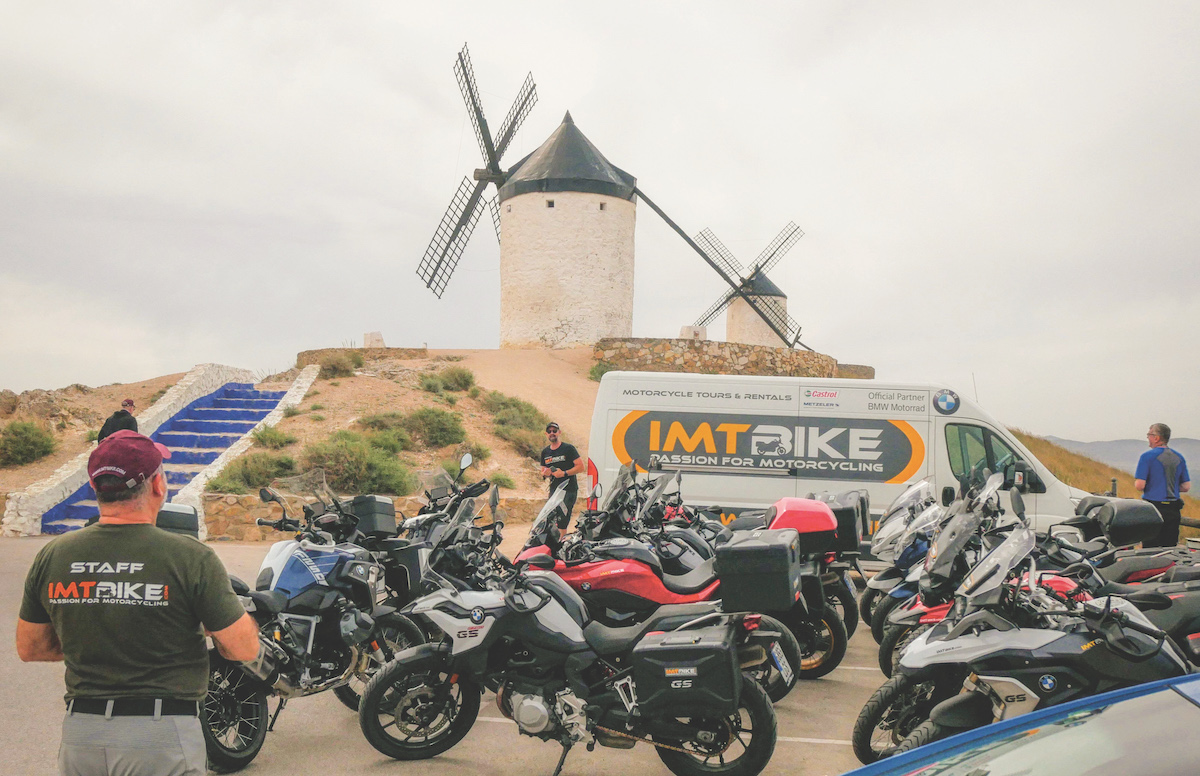
Great People
Everywhere we went, the people were helpful and friendly, and they absolutely love motorcycles and motorcyclists! Car drivers and pedestrians frequently waved joyously as we passed, with adults holding their children up as if we were a parade. It was almost always possible to find someone who spoke English, and knowing a little rudimentary Spanish was enough to get by, given the constant presence of our multi-lingual guides (except on rest days, when they remained available by text/phone). To be honest, I was apprehensive about being lodged in a group of strangers for two weeks, but my tour-mates were all amiable and interesting folks; I enjoyed sitting with any combination of them at meals and good conversation was reliably plentiful on riding breaks. During each rest day, joining a sub-group to roam through the area was an easy, organic process, allowing for richer connections with those companions. Scott Moreno, founder and owner of IMTBike, describes his operation as first and foremost a people-oriented business, focused on hiring ultra-high-quality human beings as staff, and promoting an atmosphere of community and pro-social engagement among the participants of each tour. Based on my exposure, this deliberate emphasis has yielded exactly the congenial interpersonal environment he envisioned.
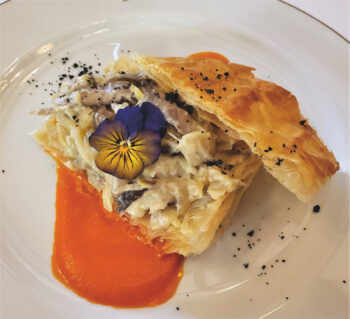 Great Value
Great Value
I’m not a business wizard, but Scott Moreno must be. I cannot fathom how he’s covering his costs, much less making any profit, given the relatively modest price of this tour and the top-shelf accommodations, food, motorcycles, and personnel included in the package. (Several tour-mates shared this same reaction.) Check IMTBike’s website for pricing on many other tours throughout Europe, North Africa, the Far East, and elsewhere, but as an example, here are figures for the upcoming fall edition of this same tour for MOA members in mid-October. The base price is 5,945 euros (you’ll have to look up the dollar conversation at the time you read this), which covers a single rider on a G 310 R in a shared room and some cool tour swag. Add between 350 and 1,315 euros for a motorcycle upgrade, 4,230 for a passenger, or 1,260 for a one-person room. Insurance, which covers rider liability, motorcycle damage/loss, and some medical provisions, is mandatory and purchased through IMTBike. A 3,000 euro-deductible version is included in the base price; a 500 euro-deductible “VIP” alternative is available for 25 euros per tour day.
If I were to recreate my tour in October, I’d pay 5,945 euros (base), plus 755 euros for my R 1250 GS, plus 1,260 for my private room, plus 325 euros for 13 days of VIP insurance coverage, making my total payment to IMTBike 8,285 euros. My fuel totaled 215 euros, and another 100 euros covered my lunches and coffees on riding days. Exercising little self-restraint, I spent roughly 300 euros (total) for food on rest days, along with snacks and drinks throughout the tour. I consumed about $100 worth of local wines (incredibly cheap, yet very good) over two weeks. That makes a grand total of 9,000 euros. Obviously, airfare and personal expenditures can add substantially to this amount. Still, I spent two weeks in luxury hotels, eating fine food, renting a premium motorcycle, and enjoying my trip without having to make any of the arrangements or figure out the best routes, with two extremely competent full-time personal assistants, for what amounts to 643 euros ($721 at time of writing) per day. I can’t imagine reproducing that more economically on my own.
To be sure, this is an expensive vacation in terms of absolute cost, but you get a whole lotta greatness—the trip of a lifetime—for your money. Depending on your fortunes, it may be just one of many. About half my group had done other organized motorcycle tours, and they all rated this one among the very best, citing the guides’ constant attentiveness and comprehensive support as standout features. To my knowledge, no one was disappointed with the product. As I write this a week after returning home, I’m still digesting the lavish feast of wonders spread across this tour’s very long banquet table; this is going to take a while! For more information, visit imtbike.com.
Mark Barnes is a clinical psychologist and motojournalist. To read more of his writings, check out his book Why We Ride: A Psychologist Explains the Motorcyclist’s Mind and the Love Affair Between Rider, Bike and Road, currently available in paperback through Amazon and other retailers.
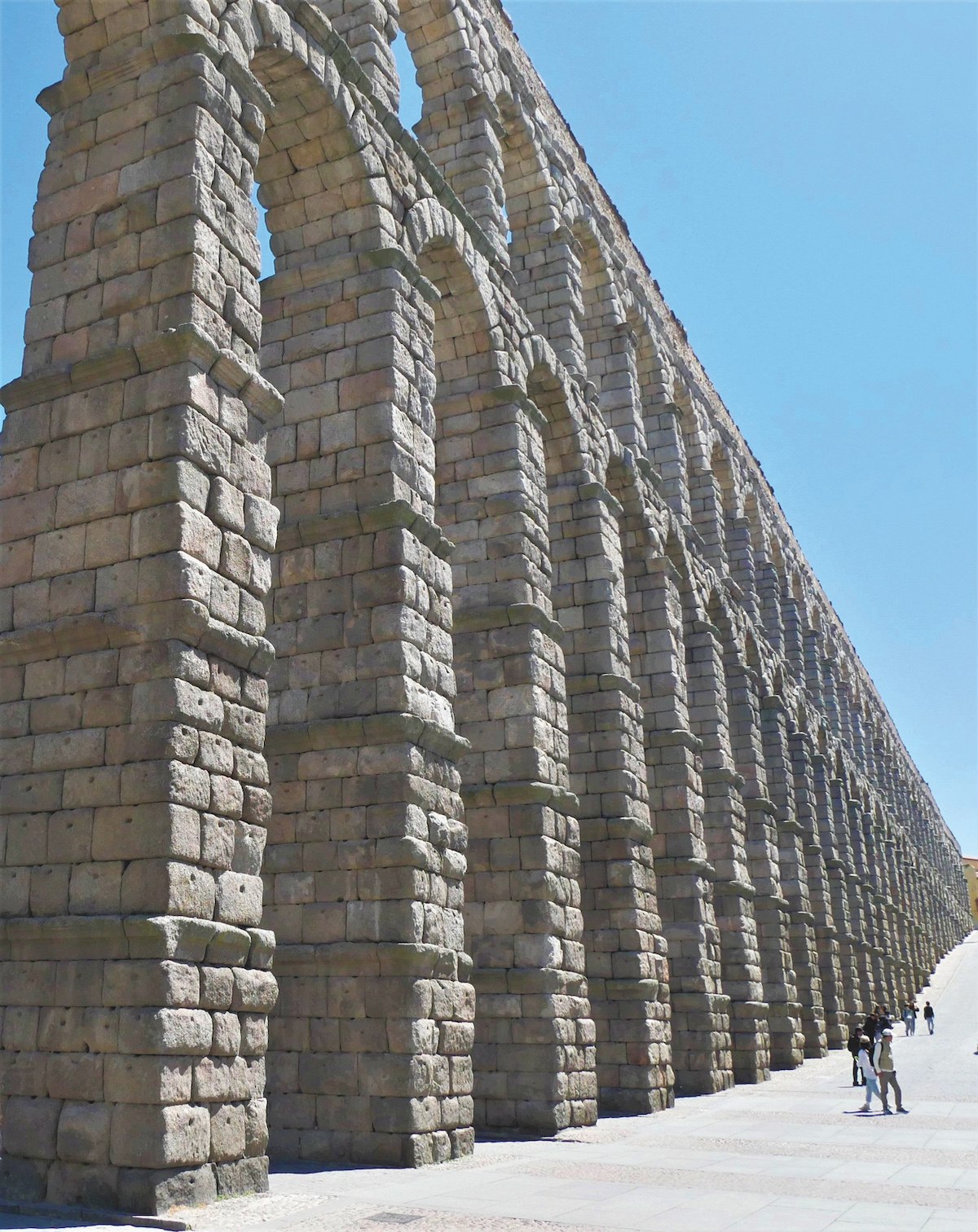

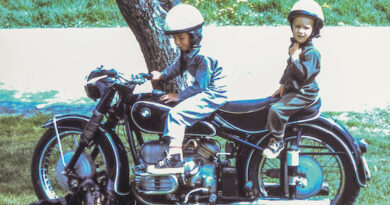
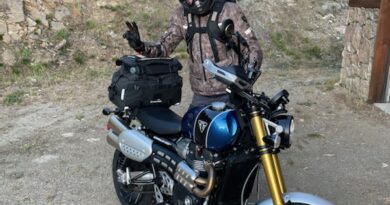
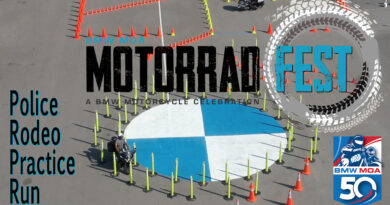
Very good summary of the trip. Also enjoyed the podcast. Great trip, fantastic people, amazing food and superb places that we stayed in (calling them hotels is just not sufficiently descriptive). Can’t wait to read about your next trip of a lifetime Mark.
All IMT tours are like what you experienced…..we’ve done 9 of them and have never been disappointed….FYI: Scott is from Queens, NY